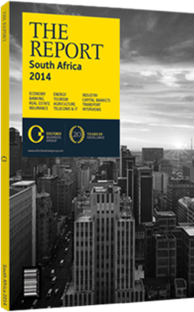A substantial increase in nuclear generation capacity is on the way
One of the boldest moves outlined in South Africa’s longterm energy strategy is a major nuclear expansion programme, originally proposed in the 20-year Integrated Resource Plan (IRP) published in 2010. The original IRP calls for the construction of an additional 9600 MW of nuclear baseload generation capacity by 2029, equivalent to 23% of projected total energy demand, which is expected to cost anywhere from $40bn to $100bn to build, representing one of the larger nuclear building programmes in the world. The plan estimated a nuclear capacity cost of $5000 per KW, roughly twice the cost of production in China and South Korea.
Green Light
Even as a number of programmes elsewhere in the world have been curtailed in the wake of the disaster at Fukushima in Japan in 2011, South Africa is pushing ahead. In his state-of-the-nation address in February 2014, President Jacob Zuma said that the country expects to conclude the nuclear procurement process by the end of the year. “Having evaluated the risks and opportunities, the final regulations will be released soon and will be followed by the processing and granting of licences,” Zuma said. In July 2014 the energy minister, Tina Joemat-Pettersson, said that nuclear expansion “is a central feature in our future energy mix” which would help the country meet its emissions reduction target. The development of nuclear capacity could also be beneficial for the development of the economy and in promoting energy security.
Uranium
Domestic uranium enrichment stopped in 1985, but the plans to boost nuclear power capacity have raised the possibility that it will resume. South Africa has uranium reserves estimated at 295,000 tonnes, or 5% of the world’s total, by the OECD Nuclear Energy Agency and the International Atomic Energy Agency in 2009, enough to develop fuel rods for a nuclear build and potentially even for export purposes.
Timeframe
The revised IRP published by the Department of Energy (DoE) in late 2013 said that due to a dramatic reduction in projected energy demand, South Africa would not require any new nuclear base-load capacity until 2025 at the earliest, if at all. It also highlights that several variables will determine the timing of the project’s execution, which depends on several factors, including the price of nuclear power, and whether a secure supply of natural gas and hydropower can be procured. “If, and only if, electricity net-sent out is greater than 265 terawatt hours (TWh) in 2014 (or 270 TWh in 2015) AND there is no expectation of large-scale gas development then the nuclear procurement should proceed,” the 2013 draft update reads.
Foreign Interest
Regardless of the timeline for the project’s delivery, it has attracted multinational firms, such as France’s Areva and the US’s Westinghouse, which are both among those that have expressed interest in bidding for the potential contract.
In November 2013 subsidiaries of Russia’s stateowned nuclear firm, Rosatom, said they had signed an agreement over “strategic cooperation in engineering, design, procurement and construction” with the South African Nuclear Energy Corporation (NECSA). Rosatom’s involvement could include the building of eight new reactors that would increase the national nuclear capacity six-fold over the next 15 years. The South African government said it had held bilateral talks to discuss a draft of Rosatom’s bid and signed a cooperation agreement with the parastatal firm.
China and South Africa had similar bilateral talks in Cape Town in March 2014, and NECSA also concluded cooperation agreements with China General Nuclear Corporation and State Nuclear Power Technology Corporation in 2014.“There are multiple nations that are very eager to assist in South Africa’s nuclear build programme, so gaining expertise and skills should not be an issue,” NECSA’s CEO, Phumzile Tshelane, told OBG. In October 2014 the DoE said that South Africa had signed nuclear cooperation agreements with South Korea and the US before signing the Russian agreement – and will sign similar agreements with France, China and Japan before it decides on which country’s technology will be selected to build the new fleet of reactors.
You have reached the limit of premium articles you can view for free.
Choose from the options below to purchase print or digital editions of our Reports. You can also purchase a website subscription giving you unlimited access to all of our Reports online for 12 months.
If you have already purchased this Report or have a website subscription, please login to continue.

